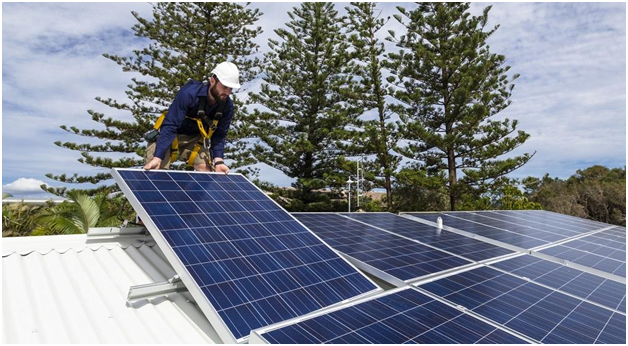Switching to solar energy is an excellent way to reduce or eliminate your monthly electricity bills while watching your carbon footprint. With green energy plans from Pulse Electricity (offers very inexpensive prices on Home Energy Club), you can enjoy the advantages of solar energy without incurring the high expense or time commitment of installing your own solar panels.
Generally, an average home requires about twenty to twenty-five solar panels. However, the exact number depends on various factors, such as standard energy usage, location, and the power every solar panel generates.
Let’s explore solar panels more to help you calculate how many panels you need for your home.
Understanding Your Power Usage
The key to determining how many solar panels your home needs is, understanding your average power usage. Your usage depends on the number of appliances, how frequently you use them, and the number of people in your home.
You can determine your average monthly power usage using your last monthly bill. The bill often outlines your power usage over the previous twelve months. You can add up the numbers to estimate your annual usage.
Solar Panel Output Options
Solar panels are available in different power levels and wattages. The panels keep evolving as new efficiencies and technologies emerge. Although most panels look similar, various brands produce other power, reliability, and quality levels.
The output of every panel or module is in watts. This means a 200W solar panel working under optimal conditions can produce 200-watt-hours of electricity every hour. A standard solar panel can generate between 250 and 400 power watts, depending on your area’s sunlight and shade on your roof.
The panel’s output also determines the size, so a 200W panel is bigger than a 100W panel. If you have limited roof space, it’s best to look for panels with higher power ratings. Such panels can produce more energy individually but may be more expensive.
Installation Considerations
Solar panels require sufficient solar radiation for optimum performance. They work best in places with broad sunlight coverage. Therefore, homeowners in areas with high annual sunlight distribution benefit most.
Before installing a solar system, it’s essential to observe the sunlight distribution in your area. It will help you determine whether to get additional or more powerful panels.
Every solar system has a life span where it achieves optimal performance. When comparing different systems, ensure you check the lifespan and manufacturer details. It’s best to avoid poor-quality equipment that will serve you only for a few years.
Qualified solar installation experts understand how to enhance the system’s solar radiation reception. They eliminate obstructions and ensure the angle of interaction between the panels and the sun’s rays is ideal.
Calculating the Size of Your Solar Energy System
A solar system’s capacity is the specific production or yield. This is the annual kWh of energy the system generates for every installed kilowatt of solar capacity.
The specific yield significantly depends on the amount of sunlight in your area. It also depends on the area’s peak sunlight hours, your roof conditions, and the type of solar panels. You can estimate the number of kW your home needs by dividing your annual power usage by the specific yield per kW of solar capacity.
Suppose you require 20,000 kWh of energy annually, and your area’s specific solar panels yield is 2,000 kWh/kWp. This means your system’s size should be about 20 kilowatts.
You can also divide your annual usage in kWh by 1200 to determine the necessary solar capacity. For instance, if your usage is 24,000 kWh, 24,000 / 1,200 = 20, so you’ll need a 20 kW system.
Conclusion
Australia is gravitating towards solar energy for various reasons. It’s affordable, has low installation and maintenance costs, it’s sustainable and environmentally friendly.
Now that you know how to estimate the number of solar panels, you need to call a solar energy expert and start your transition to zero power bills.

